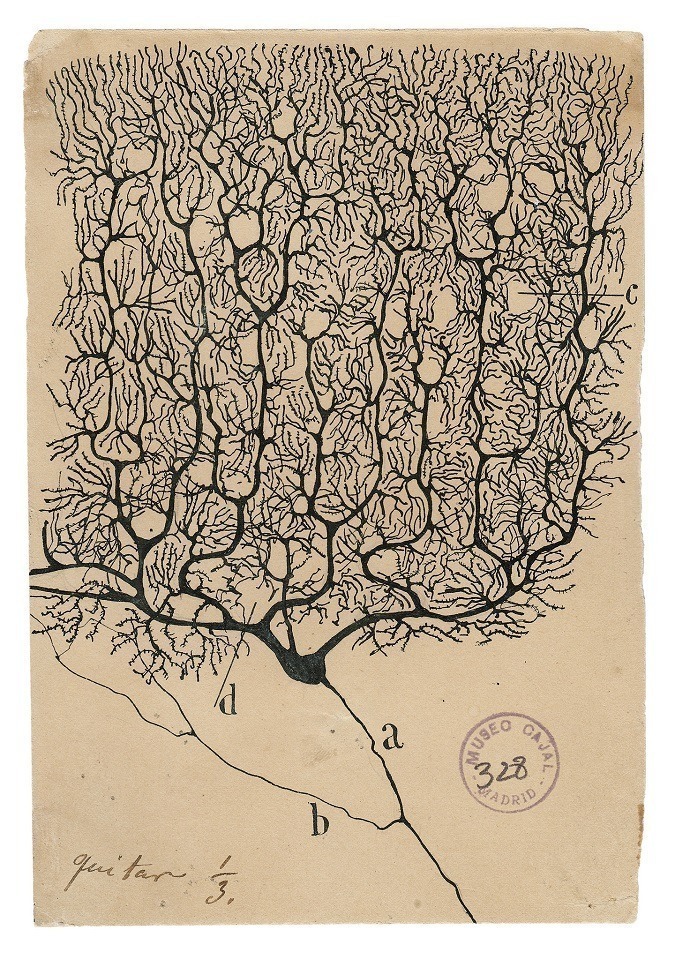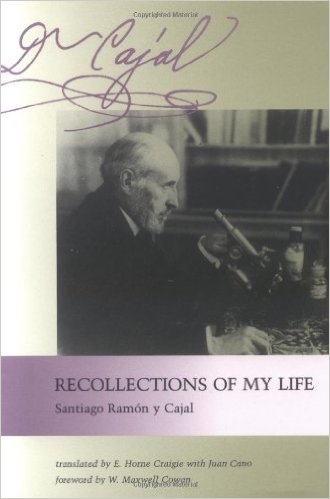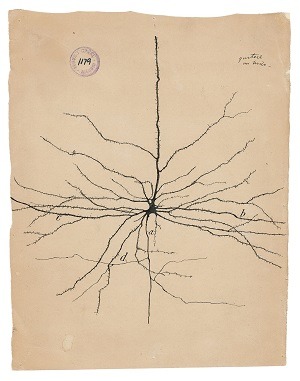Neuroplasticity as seen by one of its earliest scientist proponents: Neuroscience pioneer Santiago Ramón y Cajal

– One of Ramón y Cajal’s iconic images, showing a Purkinje neuron with its treelike structure
—
A couple of weeks ago The New York Times published an excellent article about the life and work of neuroscience pioneer Santiago Ramón y Cajal: Hunched Over a Microscope, He Sketched the Secrets of How the Brain Works.
Please go and read it–and enjoy those amazing images!
I recently read Recollections of My Life, Ramón y Cajal’s fascinating autobiography. The book combines a lively window into his life and thinking, combined with his main contributions to brain research.
 Since he said “Every man can, of he so desires, become the sculptor of his own brain,” thereby emphasizing what we now call lifelong neuroplasticity (the ability of the brain to rewire itself through experience), let’s try to see what he had in mind by discussing some other things he had to say in his autobiography:
Since he said “Every man can, of he so desires, become the sculptor of his own brain,” thereby emphasizing what we now call lifelong neuroplasticity (the ability of the brain to rewire itself through experience), let’s try to see what he had in mind by discussing some other things he had to say in his autobiography:
– (when discussing his own character): “a profound belief in the sovereign will; faith in work; the conviction that a persevering and deliberate effort is capable of moulding and organizing everything, from the muscle to the brain, making up the deficiencies of nature and even overcoming the mischances of character-the most difficult thing in life.”
- Comment: Strong and hopeful belief in neuroplasticity, even if he couldn’t prove it then.
– “Before the foaming torrent of new impressions, the youth has to bring into action regions of his brain which hitherto lay fallow. A significant indication of the great mental crisis, of this functional struggle between old and new ideas which is stirred up in the mind, is the bewilderment which seizes up during the first days of exploring a city. In the end, order is established. The plastic adaptation once completed, the cerebral organization is enriched and refined; one knows more and one’s judgement is improved accordingly.”
- Comment: Want to encourage neuroplasticity? Go and live in a new city or country for a while.
– (summarizing a scientific paper he submitted in 1894) …the conclusion was reached that intellectual power, and its most noble expressions, talent and genius, do not depend on the size or number of cerebral neurons, but on the richness of their connective proceses, or in other words on the complexity of the association pathways to short and long distances…Adaptation and professional dexterity, or rather the perfecting of function by exercise (physical education, speech, writing, piano-playing, mastery in fencing, and other activities) were explained by either a progressive thickening of the nervous pathways … excited by the passage of the impulse or the formation of new cell processes (non-congenital growth of new dendrites and extension and branching of axone collaterals) capable of improving the suitability and the extension of the contacts, and even of making entirely new connections between neurons primitively independent”
- Comment: Wow…and written in 1894!
– (on his role encouraging the work of younger peers) “I always tried to put as little pressure as possible on the minds of my pupils. Every opinion which was the outcome of an honest mental effort, especially if it has risen from recently discovered facts, has inspired me with sympathy and respect, even though it might contradict fondly cherished personal conceptions. How was I to fall into the temptation to impose my own theories when I have given outstanding examples of abandoning them as a result of the smallest objective evidence against them? Far be from me that self-idolizing desire, the forerunner of irremediable senility”.
- Comment: Another wow.
– “…I am a fervent adept of the religion of facts. It has been said innumerable times, and I have also repeated it, that “facts remain and theories pass away…To observe without thinking is as dangerous as to think without observing. Theory is our best intellectual tool; a tool, like all others, liable to be notched and to rust, requiring continual repairs and replacements, but without which it would be almost impossible to make a deep hollow in the marble block of reality”
- Comment: Beautiful display of the scientific mindset.
– (after a first disillusionment) “I consoled myself then in the way that I have always been in the habit of doing…namely by bathing my soul in nature…For one who is capable of appreciating its enchantment, the country is the sovereign soother of emotions, the unreplaceable commutator of thoughts.”
- Comment: I was surprised by the lyrical nature of several passages in his autobiography, like this one. When Howard Gartner talks of a “naturalistic intelligence,” he may well be thinking of attitudes like Cajal’s.

– Another iconic image, of a pyramidal neuron in the cerebral cortex
– (reflections during his last years, when he had to stop teaching): “When we have reached the age of seventy, the inexorable but foresighted law expels us from the classroom, cutting off forever the daily chat with our pupils. I do not regret that; I consider it wise and reasonable. Chill old age, with its disillusionments and its disabilities, is, with rare exceptions, incompatible with good oral instruction, which calls for quickness and sharpness of the senses, ready, enthusiastic, and vigorous diction, a vibrant and robust voice, agility of memory and of thought, and flexibility of attention capable of jumping instantly from the serene and lofty region of ideas to the vulgar and annoying requirements of maintaining order”…
“But I have no right to afflict the reader with melancholy reflections. Let us repel sadness, which is mother of inaction. Let us devote ourselves to life which is energy, renovation, and progress, and let us keep working. Only tenacious activity on behalf of truth justifies living and gives consolation for sorrow and injustice.”
- Comment: What a display of wisdom…what a display of a beautifully-sculpted brain .
To read more, this is the link to his autobiography:
- Recollections of My Life
, by Santiago Ramón y Cajal.
Related articles:


